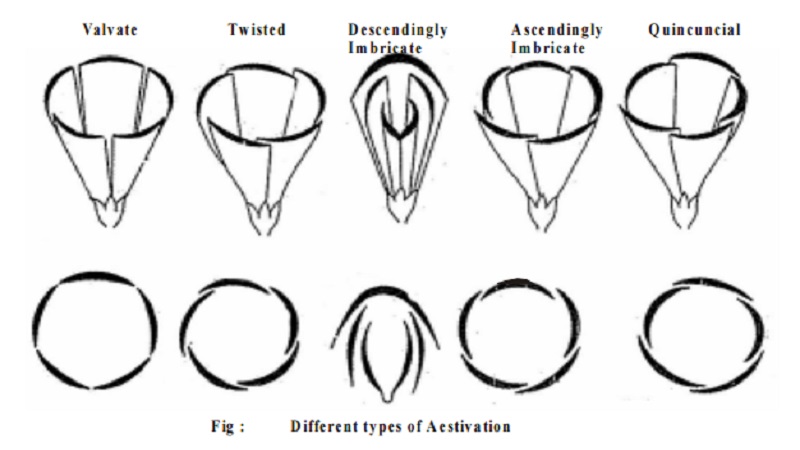Chapter: 11th 12th standard bio Biotany Plant Tree higher secondary school
Plant Aestivation And Types of Aestivation

Aestivation
The mode of arrangement of either sepals or petals of a flower in bud condition is said to be an Aestivation.
The Aestivation is of the following types
1. Valvate Aestivation
Sepals or petals in a whorl just meet by their edges without overlapping. eg. Sepals of Hibiscus.
2. Twisted Aestivation
In this mode of aestivation one margin of each sepal or petal overlaps the next one, and the other margin is overlapped by a preceding one. Here the over lapping is regular in one direction-clockwise or anticlockwise. eg. Petals of Hibiscus
3. Imbricate
In this type, one sepal or petal is internal or being overlapped on both the margins and one sepal or petal is external with both of its margins overlapping. Of the remaining sepals or petals, one margin is overlapping and the other margin overlapped.
There are two types of imbricate aestivation descendingly imbricate and ascendingly imbricate.
Descendingly Imbricate or Vexillary Aestivation: In this type of aestivation the posterior petal of overlaps one margin of the two lateral petals.
The other margin of these two lateral petals overlaps the two anterior petals, which are united. Thus the overlapping is in descending order and hence the name eg. Corolla of Fabaceae.
Ascendingly imbricate aestivation : In this type the posterior odd petal is innermost being overlapped by one margin of the two lateral petals. The other margin of the two lateral petals is overlapped by the two anterior petals. Here the overlapping of petals begins from the anterior side proceeding towards the posterior side. This is just opposite of descendingly imbricate aestivation. eg.Petals of Caesalpiniaceae.
4. Quincuncial
It is modification of imbricate aestivation in which two petals are internal, two are external and the fifth one has one margin external and the other margin internal. eg. Guava
Related Topics